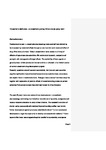Thiopental to desflurane - an anaesthetic journey. Where are we going next?
| dc.contributor.author | Sneyd, John | |
| dc.date.accessioned | 2017-08-21T10:42:24Z | |
| dc.date.issued | 2017-12-01 | |
| dc.identifier.issn | 0007-0912 | |
| dc.identifier.issn | 1471-6771 | |
| dc.identifier.uri | http://hdl.handle.net/10026.1/9849 | |
| dc.description.abstract |
Development targets in anaesthetic pharmacology have evolved from minimizing harm caused by unwanted effects through an era in which rapid onset and offset of drug effect were prioritised. Today's anaesthetists have access to a library of effective drugs whose characteristics offer controllable hypnosis, analgesia and paralysis with manageable off-target effects. The availability of these agents at generic prices inhibits commercial interest and this is reflected in the limited number of current anaesthetic drug development projects. Recently, questions around neonatal neurotoxicity, delirium and postoperative cognitive dysfunction have stimulated research to characterise these phenomena and explain them in mechanistic terms. Emergent basic science from these enquiries together with exploration of possible effects of anaesthetic drug choice on patient outcomes from cancer surgery may yield new targets for drug discovery. | |
| dc.format.extent | i44-i52 | |
| dc.format.medium | ||
| dc.language | en | |
| dc.language.iso | en | |
| dc.publisher | Oxford University Press (OUP) | |
| dc.subject | Anesthesiology | |
| dc.subject | Anesthetics, Inhalation | |
| dc.subject | Anesthetics, Intravenous | |
| dc.subject | Desflurane | |
| dc.subject | Humans | |
| dc.subject | Hypnotics and Sedatives | |
| dc.subject | Thiopental | |
| dc.title | Thiopental to desflurane - an anaesthetic journey. Where are we going next? | |
| dc.type | journal-article | |
| dc.type | Journal Article | |
| dc.type | Review | |
| plymouth.author-url | https://www.webofscience.com/api/gateway?GWVersion=2&SrcApp=PARTNER_APP&SrcAuth=LinksAMR&KeyUT=WOS:000417330800006&DestLinkType=FullRecord&DestApp=ALL_WOS&UsrCustomerID=11bb513d99f797142bcfeffcc58ea008 | |
| plymouth.issue | suppl_1 | |
| plymouth.volume | 119 | |
| plymouth.publication-status | Published online | |
| plymouth.journal | British Journal of Anaesthesia | |
| dc.identifier.doi | 10.1093/bja/aex328 | |
| plymouth.organisational-group | /Plymouth | |
| plymouth.organisational-group | /Plymouth/Faculty of Health | |
| plymouth.organisational-group | /Plymouth/Users by role | |
| dc.publisher.place | England | |
| dcterms.dateAccepted | 2017-08-21 | |
| dc.rights.embargodate | 2018-11-17 | |
| dc.identifier.eissn | 1471-6771 | |
| dc.rights.embargoperiod | Not known | |
| rioxxterms.versionofrecord | 10.1093/bja/aex328 | |
| rioxxterms.licenseref.uri | http://www.rioxx.net/licenses/all-rights-reserved | |
| rioxxterms.licenseref.startdate | 2017-12-01 | |
| rioxxterms.type | Journal Article/Review |


